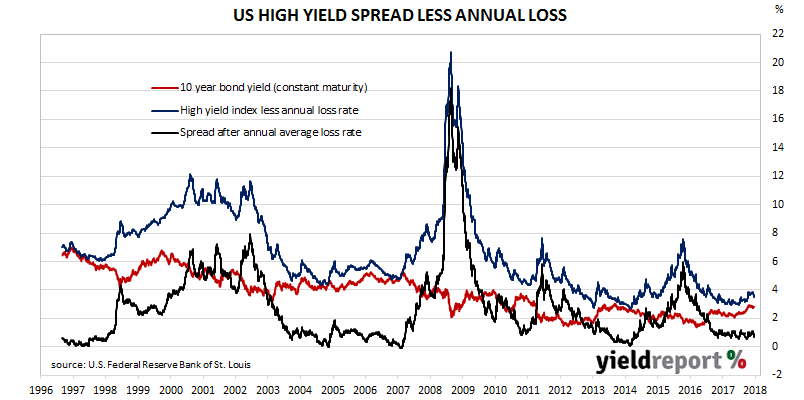Any bond issued by any company has some chance of default. After all, who knows what may happen to a company’s fortunes in the next year or five years or decade. However, some bonds are thought to be riskier than others, possibly as a result of the issuer of the bonds or the structure (rules) of the bonds.
“High yield” bonds, once referred to as “junk” bonds, are simply bonds which are not rated as investment-grade by ratings agencies. That is, they have a credit rating of BB+ or lower or no credit rating at all. As such, they are perceived to have a higher probability of default than bonds with investment-grade ratings.
Currently, the spread between the Bank of America Merrill Lynch US High Yield Master II Index (used by the Federal Reserve as a measure of sub-investment grade yield) and U.S. 10 year bonds is around 3.3%. 3.3% is a useful amount per year but as John Coumarianos from Institutional Imperative pointed out, this is not the full story. “The truth is that it’s much riskier than it seems from doing this simple yield, or yield-spread, analysis. That’s because the annual loss rate for junk bonds over the past 35 years has been around 2.5%.”

What he is referring to is the annual loss high yield investors have experienced in the past, assuming they held diversified portfolios of high yield bonds for lengthy periods. Taking into account annual default rates on high yield bonds average about 4.2% according to Standard & Poor’s research, in conjunction with the fact not all bond defaults result in 100% losses, he calculated the average annual loss works out to be 2.5%.

